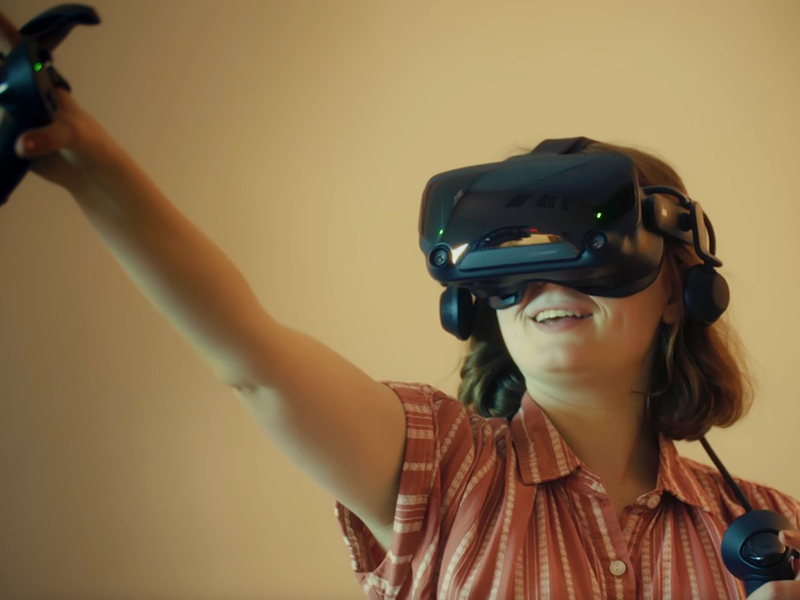Students create video games in class
Approximately 2.5 billion people worldwide play video games annually. The industry is constantly growing, attracting more players and publishing more games every year.
Tulane students who are interested in video games have the opportunity to design their own games and work with cutting-edge technology like virtual reality, or VR, and a motion capture suit, thanks to the Game Studio classes taught by Jon Chambers, professor of practice in digital media practices in the School of Liberal Arts.
“I’ve always enjoyed video games, so getting the opportunity to do the technical side of it was really interesting to me,” said Olivia Maki, a senior studying digital media production and studio art with a minor in Asian Studies.
The classes are part of the Digital Media Practices program, which includes a coordinate major, but undergraduate students from across the university can take them. “I have students bringing in their expertise from different programs and departments from all over the school,” said Chambers.
He and his colleagues consider that interdisciplinary approach to media as they create new courses and build spaces for students to use their knowledge to be experimental with what they create.
“I encourage my students in my courses to experiment, to break things, to kind of push themselves beyond thinking about games as just a first-person shooter or these games that have been made over and over again throughout history,” said Chambers. He teaches students to approach video games as an art form and look critically at both the games themselves and the industry that makes them.
“This class has definitely given me a completely different perspective than I previously had on video games and video game design,” said Tori Coover, a senior studying communications. “It is definitely such a detail-oriented experience making a game, and things can go haywire so quickly, so it’s given me a newfound respect for game devs.”
“It’s really hard, but it also kind of makes you love it more because you see how much time and passion goes into video games,” said Maki.
One of the tools available to students as they create their games is a motion capture suit, which can be used to create visuals within their games.
“The motion capture suit is a form of tracking movement,” Maki explained. “You put it on and whatever movement you do, the different pieces of it are connected to the sensors and track that exact movement.”
Even if students don’t use every technology available to them in their final games, the class gives them experiences in every part of making a game, from conception to final product.
“It was definitely a once-in-a-lifetime experience, being able to have the suit on and also be the person working with the footage that was captured,” said Coover. “I sort of got to see the entire process from actor to editor to putting it into a game, which is, I think, a unique experience, even in industry.”
The students also get to create entire worlds that can be experienced through VR headsets. Previous students have created a kitchen from an ant’s perspective, an office where anything could be a dart and a pastry shop, to name just a few.
“When working with VR, students can explore embodied immersion that they potentially have never experienced before,” said Chambers. “It is fun watching students who have never played VR experience it for the first time, because a lot of times it’s an ‘aha’ moment.”
The VR gives students the chance to create things that would be impractical or impossible to make by themselves in the physical world, like a massive statue Coover made to represent night terrors.
“It was a really rewarding experience, because being in a VR headset and seeing something that is about five to eight times the size of your character when you’re in the headset, and seeing something in such large detail, it’s beautiful,” Coover said.

